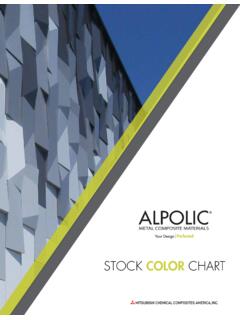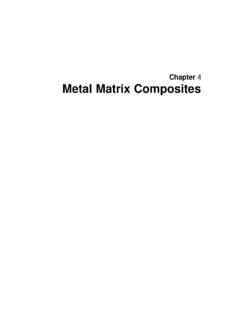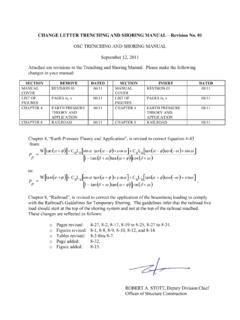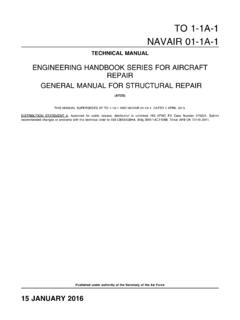Transcription of High Capacity Silicon-Graphene Anode for Li-Ion ... - NASA
1 Rob Privette Energy Markets 517-999-5444), I. Do, H. Wang, H. Bambhania, and L. Wang high Capacity Silicon-Graphene Anode for Li-Ion Batteries Outline XG Sciences xGnP graphene nanoplatelets silicon / graphene Anode for Li-Ion batteries graphene sheet heat conductors graphene -coated Al current collectors Conclusions 2 Privately held Licensees & Corp Shareholders: Cabot (US), Hanwha Chemical (K), POSCO (K) Products: xGnP graphene platelets, XG Leaf sheet, Energy Materials, Inks & Coatings 600+ customers in 32 countries Overseas distributors Korea, Japan, Taiwan, China and soon. Two locations in Lansing, Michigan 80 Ton/year manufacturing (25K ft2) Research & Development (14K ft2) Currently 40 Employees 9 R&D (7 PhDs), 4 Engineering, 4 Management Spin-off from Michigan State University (2006) Company snapshot 3 3 Company mission.
2 And sell graphene nanoplatelets as a bulk material in commercial quantities at economical costs value-added products based on our materials and manufacturing process Electrode materials for ultracapacitors and batteries Films and papers for electronics applications Coatings, inks and dispersions Licensees POSCO and Cabot identified XGS as the world leader Low cost manufacturing process 80+ ton Capacity commissioned 2012 the largest Capacity in the world 4 5 graphene - A single layer of carbon atoms, or an atomic-scale honeycomb lattice of carbon atoms. graphene Nanoplatelet - A particle consisting of multiple layers of graphene . What is graphene ? xGnP graphene Products Three different grades for different applications: Grade H: 80 m2/g available in 5, 15 or 25 micron diameters Grade M: 150 m2/g available in 5, 15 or 25 micron diameters Grade C: small diameter particles available in 300, 500, 750 m2/g strength & thermal Properties wt% Properties Properties conductivity quality properties / hydrophilic THICKNESS DIAMETER SURFACE & EDGES 6 XGS s non-GO manufacturing process provides.
3 Lower cost, higher strength, better conductivity 6 Energy Storage Electrodes for LIB or supercapacitors Thermal Management Heat spreaders for smartphones and tablets, battery packs Printed Electronics Low-cost replacement for silver Coatings Functional barrier coatings, sensors Lubrication Anti-wear additive Structural composites autos, aerospace, wind energy, construction Thermoplastics like PP, PC, PE Thermosets like epoxies, urethanes, acrylics 7 xGnP graphene Applications Energy storage materials Lithium-ion batteries graphene conductive additive high specific energy silicon / graphene Anode Lead-carbon batteries high charge rate/ cycle life Anode Supercapacitors high specific energy paper electrode Advanced Li-air battery cathode Li-S battery Anode 8 9 020406080100120140160180200051015202530 Capacity (mAh/g) Cycle number Super CxGnP-LowxGnP-MedxGnP-High20 m2/g 60 m2/g 100 m2/g xGnP Conductive Additive Cathode: LFP ( ) on bare Al foil Binder: PVDF Electrolyte: 1M LiPF6 in EC/DMC (1:1) Electrode formulation: LFP:Binder:CA = 90:5:5 Improved rate performance above 1C silicon / graphene Anode AN-S material is produced using our existing low-cost graphene process Unique aspects.
4 Low-cost silicon precursor Graphite flake high -rate manufacturing process Result: Aggregate of silicon tightly coated by xGnP graphene platelets Demonstrates excellent Li ion transport, electrical conductivity, chemical resistance, and mechanical strength with low BET surface area 10 AN-S Material design approach Three key features incorporated to address the cycling stability & cost: nanoplatelets built into the composite structure Provide a large contact area with Si particles, Maintain electric contact between electrode components, Deliver flexibility to help accommodate Si volume change during cycling, nanoplatelets are also used as a conductive additive Flexible flake morphology provides better particle contact, Helps to maintain the mechanical integrity of the electrode. an existing, low-cost industrial manufacturing process XG Sciences is already using the process for bulk production of xGnP graphene nanoplatelets.
5 11 AN-S Material description Mean (um) D10 (um) D50 (um) D90 (um) Particle size Tap density ANS-101 : g/cc vs Commercial nano Si : ~ g/cc Typical Capacity : 2852mAh/g Morphology 12 AN-S-101 Performance 05001000150020002500050100150200250 Delithiation Capacity (mAh/g) Cycle # Theoretical Capacity (mAh/g) Test protocol Active loading (mg/cm2) Electrode Density (g/cc) 1st Cy. Eff. 2nd Cy. Eff. 2986 CCCV/CC, C/2 1 2986 CC, C/2 1 CCCV/CC mode test CC mode test The cycling stability confirms the material design strategy works well in mitigating the detrimental effects of Si particle expansion and contraction and improving the cycle life of the Si Anode . 13 0500100015002000250002040608010012014016 0180200 Charge Capacity (mAh/g) Cycle # xGnP Carbon black Conductive Agent Test protocol Active loading (mg/cm2) Electrode Density (g/cc) 1st Cyc.
6 Eff. 2nd Cyc. Eff. xGnP CC, C/2 CB CC, C/2 86% Role of xGnP Conductive Agent 14 0200400600800100012001400010203040506070 8090100 Delithiation Capacity (mAh/g) Cycle # Active loading (mg/cm2) Electrode Density (g/cc) 1st cycle eff. (%) 2nd cycle eff. (%) Test cond. CCCV/CC, 1C 98 87 Electrode densities: g/cc Electrode loadings: 1 8 mg/cm2 AN-SH Performance 15 AN-SH Full Cell Performance 16 0102030405060708090100110120051015202530 35020406080100 Efficiency Capacity (mAh) Cycle number ChargeDischargeefficiencySize: 15cm2 Separator: Celgard2320 Cathode: ANL NCM Anode : SiG New-5 Electrolyte: 1M LiPF6 w 10% FEC Test protocol: CCCV (Li)/CC (de-Li), C/2 Voltage range: C Rate calculated from cathode C/15 C/2 C/5 17 graphene heat conductors Application: Heat spreading and thermal management Battery packs* Portable Electronics LED Devices Thermal conductivity: 500 W/mK (in-plane) Adjustable thickness.
7 25-200 m Adjustable mechanical properties 24-in x 24-in sheet Highly anisotropic Flexible and lightweight Self-standing Corrosion resistant Product Characteristics XG Leaf is a thin, flexible, lightweight sheet optimized for in-plane thermal conductivity. * ANALYSIS OF HEAT-SPREADING THERMAL MANAGEMENT SOLUTIONS FOR LITHIUM-ION BATTERIES, Khasawneh, 2011 XG Leaf Thermal conductivity Product Description Thermal Conductivity (W/mK) XG Leaf high thermal conductivity 25 100+ m Anisotropic controlled heat transfer in 2D 400 600 Natural Graphite Limited thermal conductivity 150 400 HOPG (Highly Oriented Pyrolytic Graphite) Expensive high temperature batch process (> 2000 C) 500 1500 Copper Lower thermal conductivity Heavy < 400 Aluminum Much lower thermal conductivity Corrosive < 237 18 graphene -coated Al current collectors * Performance of Li-Ion battery electrodes with graphenes as conductive additive and graphene -based adhesion layers, F.
8 Mahlendorf, , G. Prinz, A. Heinzel, S. Wennig, B. Oberschachtsiek, AABC 2013 19 Discharge Capacity (at 1 C) vs (a) cycle number and (b) C-rate for LFP cathodes with xGnP graphene and carbon black coated Al current collectors (a) (b) Performance of LFP-based cells enhanced through: 1) Conductive xGnP graphene interface, 2) Surface texture. Conclusions xGnP graphene Bulk Material LFP Cathode rate performance benefits from xGnP conductive additive AN-S silicon / graphene Anode Capacity 600 mAh/g 2000 mAh/g 1st cycle efficiency 85 90% Stable cycling performance over 200+ cycles XG Leaf graphene sheet heat conductors Provide 500 W/mK (in-plane)/ 5 W/mK (through plane), non-corrosive and light weight 24-in x 24-in sheet product graphene -coated Al current collectors Improve Capacity , rate performance and adhesion of LFP cathodes 20 Materials enabling extending run-time in battery applications 21

















